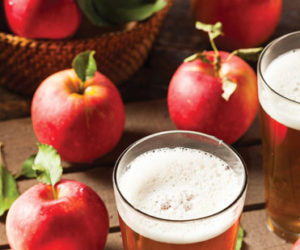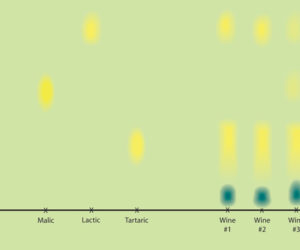In the April/May 2018 issue, we outlined basic equipment every winemaker should have in order to produce wine, generally from kits or juice. But for those who are looking to venture into the realm of making wine from fresh grapes, there is an additional set of equipment that is required to get fermenting.
Fresh-grape equipment can be an investment, so if buying your own is beyond your budget there are alternatives. You can seek out other winemakers via local winemaking clubs or through winemaking shops. Clubs may have big seasonal crush events or they may co-op equipment for club members. Winemaking shops may rent out equipment for fresh-grape winemaking or provide a space and equipment where folks can come crush and press grapes.
Crusher-Destemmer
Often the single biggest investment for fresh-grape winemakers is the crusher-destemmer. It takes whole grape clusters and breaks up the fruit while simultaneously removing the grape stems. This is a step that can also be performed by your feet as so famously portrayed by Lucille Ball, but one that is best performed by a mechanical device. Crusher-destemmers can be motorized or hand-cranked, with the motorized versions being the more costly of the two. Since this piece of equipment is a bottleneck point for many winemakers who would like to make the jump to fresh-grape winemaking, seeking out fellow winemakers and supply shops can help catalyze this jump.
Grape Press
A winemaker’s press is usually going to be the next biggest investment for fresh grape winemakers behind the crusher-destemmer. There are two main types of presses utilized by home winemakers: Basket and bladder. A basket press is the main type utilized by hobby winemakers and uses a basket or bucket with vent holes or gaps in the side of the container. The grape solids (pomace) will be contained in the press while a mechanical crank, often a ratchet, pushes down a plate onto the grapes, pressing out the juice which drains out through the vent holes.
A bladder press is very similar to the basket press, but just differs in the mechanical pressing mechanism. Bladder presses contain a stout balloon in the center of the press that, with the aid of an air compressor or garden hose, will push the juice outward through the vent holes. A bladder press costs quite a bit more than a basket press, but the control over the pressure applied to the pomace offers a big advantage.
Scientific Equipment
Refractometer: It is a rare harvest when grapes will have the perfect balance of sugar, acid, and pH. A refractometer will provide the Brix (sugar level) of the must. Will the grapes require chaptalization (sugar addition) or dilution? Also if the Brix is reading high, an acid addition may be required. A basic refractometer doesn’t cost a lot of money, but can be a critical first indicator if corrections need to be made.
pH Meter: A good pH meter should be the next item on a winemaker’s want-list after a refractometer. Focusing on the pH of the unfermented must and post-fermentation wine can mean the difference between mediocre wine and great wine. pH plays a significant role in wine production: Color extraction of red wines during fermentation, microbial stability of the wine after fermentation, the wine’s sulfur requirements, and the overall balance of the wine. Getting a feel for pH and where you want the pH to land at various points in wine production should be a major focus of any winemaker looking to up their game.
Titratable Acid Test Kit (optional): One scientific test that comes in handy for fresh-grape winemakers is learning the titratable acid (TA) of the wine. While pH meters are a good overall indication of the free acidity, a TA test can hone in on a wine’s potential acidity, which other compounds in the wine may be masking when measuring pH. This has a more direct relationship with the overall flavor profile of the wine and its acidity when compared to pH.
Red-Wine Specific Equipment
When crafting red wines, fermentation occurs after the crushing but before the pressing phase. Because of this difference in the process, there are a few additional pieces of equipment for fresh-grape red-wine makers. During fermentation, a mix of the grape skins, seeds, and pulp, known as the cap, will push its way to the top of the fermentation. Red-wine makers want to re-submerge the cap to continue the extraction process of flavor and color compounds from the solids (the process known as maceration). Winemakers use a piece of equipment known as a punchdown to keep the cap down, punching down a few times a day during active fermentation.
A large food-grade pail or other open topped fermenter is also crucial for red winemakers. The size will depend on your desired batch volume, but common pail sizes are 7-gallon (26-L), 10-gallon (38-L), 20-gallon (76-L), 32-gallon (121-L), 44-gallon (167-L), and 55-gallon (208-L) sizes easily attainable.
If you aspire to make wine from fresh grapes, we hope that equipment won’t impede you. Get out there and start asking around to see what is available in your area. You may find there is a wealth of knowledge and fun opportunities just around the corner. We hope this can be your basic equipment guide.







